What are High-Speed Railways or Bullet Trains?

If transportation technology were to be equated to Indian cinema, High-Speed trains are its Rajinikanth. High-Speed Railways are often viewed as the epitome of infrastructure development of a region or nation, showpieces of advancement and rank high up there when it comes to quality-of-life indicators. Those futuristic, sleek, shiny, lightning fast, drunk-on-technology wonders silently and smoothly traversing landmasses at 300 kilometers per hour are looked upon in awe and wonder by lesser mortals, who silently wish upon a star that one day these whizzing wonders would make an appearance in their worlds too. One of those lands is India.
High-speed railways are among the most admired pieces of hardware and technology the world over. They are genre of technology that has evolved in the right direction in the past century, getting better and faster as time goes on with no apparent ceiling as compared to air and road travel. Even for the lay person they generate awe and wonder more than even airplanes do. It is no wonder that almost all of the most developed countries of the world have their own high speed railway lines, and I would dare say that a couple of them developed to the level of where they are thanks to these high-tech wonders. They make great showpieces to the world about the levels of development and quality of human lives in those respective countries, because more than being able to build vehicles that travel at 350 kph on the ground, it is the fact that people can afford to travel in them that becomes the moot point.

A Very Quick Overlook of HSR History and their Spread
Of course it was Japan, that wonderland of all technology that kicked off the race of supertrains. The original and first “Bullet Train” left Tokyo on the world’s first high-speed railway line, the Tokaido Shinkansen on June 1964 barely just 20 years after the country was nearly annihilated in World War 2. France followed suit by increasing the speed of its 160 kph Le Capitole trains to 200 kph in 1967. USA started its Metroliner service between New York and Washington DC in 1969, Great Britain followed its former colony with the Diesel InterCity 125 in 1976 and Italy started its own HSR line, the Direttisima in 1977, all which ran at 200 kph. Then came the French revolution which would set the standard for rail travel in Europe. The French SNCF TGV started running at 270 kph in 1981 but was soon upgraded to 300 kph by 1985, and today runs at 320 kph. Not to be left behind, the land of gleaming automobiles, Germany launched its own supertrains in 1991 with the 280 kph Deutsche Bahn ICE InterCity Express high speed trains that today run at 320 kph. Spain’s RENFE AVE high speed trains started running in 1992 and today Spain has the largest high-speed rail network in Europe (3100 km).
By this time, many train lines in Europe were being upgraded to high-speed standards, giving rise to the 300 kph Eurostar (London – Paris/Brussels) and Thalys (Paris-Brussels-Amsterdam). South Korea launched its 305 kph Korail KTX services in 2004 and Taiwan opened a 300 kph high speed line on their little island in 2007. In the same year China eclipsed everyone else with its CRH (Harmony) high speed trains which are now capable of hitting 350 kph over a network of over 38000 km, which is more than that of all European countries combined. Switzerland, Sweden, Austria, Poland, Turkey, the Netherlands, Norway, Denmark, Greece, Portugal, Russia, Finland, Uzbekistan etc all have their own high-speed rail networks today.
What are High-Speed Railways?
What exactly are “Bullet Trains” or High-Speed Railways? Are they just trains running at very high speed? How and why are they so different in equipment (trains), design, structure, construction and technology from conventional railways? How difficult is it to implement all this? How advantageous are they compared to other modes of transport?
The term “Bullet Train” is only an unofficial (nick) name given for the first High-Speed Trains of Japan, the 0 Series trains on the Shinkansen, and is not an official term used anywhere in the World. The European Union gives the definition for High Speed Rail as rolling stock (rakes) traveling at a minimum of 250 kph on tracks specially built for high-speed trains or at a minimum of 200 kph on existing tracks upgraded for high-speed trains, with rolling stock certified fit for at least 200 kph speeds. The International Union of Railways defines HSR as a set of unique features and not just a train traveling above a certain speed. And that is what it is, high-speed railways are more of an environment rather than plain vanilla vehicles traveling at high speed, which is only the end product. High-Speed Railway is not just about building awesome looking trains, it is about creating an infrastructural environment whose components all operate in tandem and support each other to enable trainsets to operate at speeds much higher than those of conventional trains. To better understand this, we will look at how HSR cannot operate in the environment conventional trains operate in from the perspective of Indian Railways and trains. I will be only skimming or listing the most important aspects which are under the scope of this blog.
High Speed Railway Infrastructure
Starting high speed railways in India is not as simple as just buying high-end trainsets, plonking them on our rails and start running at 200 kph, because high-speed rail is more about the track than it is about the train running on it. While most “non-high speed trains” around the world today average around 110 kph, that the highest speed for our trains, because our tracks simply cannot support any train running at speeds more than that, though our newer locomotives and coaches are capable of doing upto 160 kph! For high-speed railways to operate safely and efficiently, all track and associated infrastructure has to be rebuilt or upgraded to support trains running at high speeds without failing. And how they are to be upgraded depends uniquely on the track surroundings including geography, topography, soil/rock composition, rainfall, temperature variations, rural/urban settings and so on. But the most basic requirements of high-speed rail tracks are dedicated, fenced-in tracks, CW Rails, the absence of tight curves etc.
As we can see, “Bullet” high-speed trains are radically different in appearance, technicality and composition from conventional trains. But this is not something unique to them, we only feel so because our trains probably are the most dated design in the world today. All Indian Railways trains of today consist of one standard composition: one or two locomotives in the front of the train pulling a consist of unpowered coaches along the tracks. These coaches are fully individual units which can be attached and detached easily for use on any train. This system was in vogue for trains all over the world until the end of the last century, but since then all have moved on to the trainset or multiple unit model for their long-distance and intercity trains. Indian Railways is still lumbering with the coached model because it is far easier preserving the status quo where nothing changes rather than enacting innovation which is a lot of work. The coached model is also easy to for operations and is incredibly cost effective because the coaches and locomotives can be interchangeably used for any train on the network. The model is obviously inefficient and slow but it as I said, it easy to preserve the “old ways” and status quo. Multiple unit models have been in use for our suburban trains ever since trains were introduced though.
Design of High-Speed Trains
High-Speed Trains (HST) use trainsets as equipment. Like their name suggests, trainsets are manufactured as a “set” with driving units, passenger cars, power units etc built as one contiguous set which does not require separate locomotives. High-speed trains like most passenger trains around the world will have driving cabs at either end, which not just make operations easier but will give more stability during operations since the rear end wheels will also be powered, eliminating the possibility of the train “swaying” at the end. HSTs have coaches like any other train but they are semi-permanently coupled to each other, meaning it is not easy to separate them. Technically, most HSTs are EMUs or Electric Multiple Units just like our local and Metro trains but on a much grander scale with unique technology such as articulated bogies seen on trains manufactured by Alstrom (TGV, Thalys, Eurostar, RENFE, Trenitalia). Instead of one coach having two bogies each like most trains (including ours) around the world, articulated coaches share one bogie between two coaches for all coaches. The bogie is placed where the two coaches meet so that each coach gets one axle and two wheels while the bogie frame provides an additional cross-connection between the two coaches. Articulated trains have shorter coaches and lesser capacities but are quicker, more stable at high speeds and save a lot on costs. More about technologies on high-speed trains later.
Design of HST Trainsets: High-speed trains are identified with highly streamlined, polished and aerodynamic designs accentuated by pointed front and back ends which house driving cabs, overall looking like, well, bullets. This is because the single most important determining aspect going into their design is minimizing air resistance. To avoid any disturbance in airflow around trainsets and to make them as streamlined as possible, open connections on vestibules between coaches are eliminated or substantially reduced, doors, windows etc are sealed and made “flush” on the body without even any beading, trains are even air-sealed and pressurized inside, the body shell encompasses the entire train so that no components are visible outside except pantographs and wheels. It goes without saying that exteriors should be highly polished and even which is evident when you look at them. Trainsets are made out of aluminum alloys and are much lighter than conventional trains. In all, it is the aerodynamics that make them look like out of a sci-fi movie, the same reason why super cars also look so futuristic.
It is also a misconception that High-Speed Trainsets have low carrying capacity. The 16-car N700 Shinkansen train weights 715tonss while a 18-car Garib Rath of the Indian Railways will weigh around 1000 tonnes without the engine. And both can carry 1300 passengers! European trains have lesser capacities, though. Trainsets are manufactured by Alstorm, Siemens/Bombardier, Kawasaki, Hitachi, Mitsubishi, Sanyo and others. Interior deign of the trains really is no concern because they can be outfitted in whatever way required, from like our general unreserved to those of the Maharajas’ Express. Usually they are designed just like how an airplane cabin would look like, with better leg room.
Driving Technologies: Conventional trains are driven by traction motors connected to the axles of the locomotive while the coaches are just pulled along. EMUs and hence high-speed trainsets do not have locomotives. All the equipment that would’ve been in the locomotive (transformers, rectifiers etc) are distributed throughout the train under passenger coaches. This enables EMUs to have traction motors attached to the wheels of many coaches and not just the leading ones, making them very quick to accelerate and very fast. In other words, what would have been one single locomotive is distributed as multiple units throughout the train, which is also why coaches cannot be detached and used on another train easily. They are faster, more powerful and have higher carrying capacity since passenger cabins can be extended to the very front of the train. The Shinkansen trains, CRH380, ICE 3 etc are of this type. However, not all HSTs are EMUs. Some like the TGV, Eurostar, ICE2 etc have all their equipment located in two dedicated “power cars” at either end of the train (the “pointed” cars). These power cars do all the driving and essentially act as locomotives and hence no passenger cars will have any “powered” wheels, except maybe one bogie next to the power cars. But they are still one entirely contiguous unit which makes them a mixture of EMU and conventional train.
High-Speed EMUs come bristling with technology. Almost everything on the train and the network is controlled by computers and there are armies of sensors on the train and on the track generating mountains of data which is used to make sure the train utilizes energy efficiently and stays on the track like it is supposed to. A major high-tech feature of some high speed trainsets is their “tilting” ability, usually seen in Alstom’s Pendolino trainsets in Europe. When going around curves at high speed, this technology allows the train to “tilt” or physically lean into the curve so the train can take the turn without slowing down and passengers will not feel the effects of the centrifugal force generated by the curve. Yes, just like you take a curve on a motorcycle at high speed! Since the train will be going too fast for them to see signals by the track, signals for each stretch will be transmitted to the drivers’ console inside the train itself where he can see them. This is called in-cab signaling. Also, trains have noise-suppression techniques, computer-controlled active suspension and lateral dampeners everywhere (even in the vestibules) to make sure passengers inside feel as if they are riding a feather. Add to this auto pilot, constant self-monitoring and radar systems. All train operations are of course controlled by computers with human section controllers mostly being supervisors. High-Speed Railways are the safest mode of transportation in the world with only three fatal accidents in the past 60 years!
The Latest, Fastest and most Insanely Futuristic E6 Series Shinkansen “Bullet Train” of JR East.
Tracks and Track Systems of High-Speed Railways
The most commonly repeated response to the question of the lack of high-speed trains in India is that “our tracks cannot support them”. But why cannot Bullet trains run on Indian tracks? Simply put, they are too weak. High-speed trains generate incredible amounts of kinetic energy and vibrations while accelerating, braking and running. Tracks should be designed to dissipate this energy. Most of Indian tracks are not built to handle such energy as the foundations, rails and track structure including the track bed, joints, points and crossings, rail-anchoring, sleepers etc are only built to support general everyday operations. Running high-speed trains on them will only lead to track failure and accidents.
High Speed Rail Track Design: One of the most defining features of Indian trains is the “clack-clack” or “ttak-ttak” noise they make when they running over joints where rails meet each other. Rails on Indian Railways are usually 13 or 26 meters in length, at the end of which they are joined to the next rail by screws and a fishplate. It is obvious that high-speed trains cannot run on these tracks. HSR systems use Continuously Welded Rails (CWR) which have no joints but rails welded together using thermal welding processes which also provide for thermal expansion. The train will only make a smooth hissing noise while running on these rails. You can notice this when our trains pass through stations. Rails also have their chemical compositions and density altered for more efficient and safe performance and to support trains running at high speeds. High-speed rail tracks also have lower curves with radii greater than 4 km, while Indian Railways have curves with radii of even 20 m! Joints and turnouts (points and crossings) are designed (swingnose) to help operations at 200 kph so you won’t even notice the train going over them. Bridges and embankments are also built to handle much greater stress and vibrations. Of course, the tracks should be engineered specifically for the geography involved, which is the real challenge for a country as diverse as India.
Take a long-range telescopic view of any straight rail track in India. You will see that the rails are not really arrow-straight but look as if they are wobbly, or slightly but continuously twisted out of shape. Trains while passing over these tracks will sway up and down or from side to side even at comparatively lower speeds, just like a car “jumping” as the speed goes up on a road which is seemingly level but has lots of imperfections. This “undulation” is usually caused by the heavy usage of the tracks by all kinds of different traffic including very heavy freights with axle loads of more than 23 tons. For High-Speed Rail to run at their dream-speeds of ~300 kph, they must have their own tracks on which no other rolling stock should be allowed to run. This also allows them to run undisturbed unlike in India where slower trains have to be sided and stopped to make way for the faster ones.
It is a widely held misconception that tracks for high-speed rails to run have to be embedded in concrete. However, how tracks are designed is heavily dependent on its surroundings. The standard crushed-stone ballast used for our tracks is used for high-speed railways of all types in locations where the trackbed is strong and smooth. Concrete slabs are used to embed the tracks in conditions like weak-soiled or wetter terrain, tunnels, overpasses, bridges, some stations, geologically sensitive areas etc. Sometimes tracks will be laid on concrete beds supported by stone ballast as well. For ballasted tracks however the ballast, track bed and tracks themselves are substantially different in design from conventional trains. The sleepers are placed much closer for instance, along with deeper and specially designed trackbeds, more ballast and specialized drainage systems to make the track stronger. Of course, there cannot be any road crossings or any type of crossings or debris across high-speed rail tracks, which is why they are fenced in and overpasses or underpasses are built for crossing them.
Overview of High-Speed Rail Systems and the Indian Question
In short, high-speed rail should have dedicated, specially engineered fenced-off tracks with strengthened and reinforced trackbeds, bridges and culverts, lesser gradients, long, sweeping curves if at all, custom-designed continuously welded rails with no joints, no level crossings, specially designed points and crossings and sophisticated control and monitoring systems. And all this will involve exhaustive testing. Everything has to be engineered to precision. There is no error for even a millimeter. Trains should not just end at being awesome to look at, they should also be safe, roomy, comfortable and fast. However, achieving all this is no joke. If you look closely, Japanese and Chinese high-speed rail is vastly different from European. The former gives more importance to capacity while the latter concentrates on luxury. If India were to build high-speed rail, we should definitely follow the Japanese model because our needs certainly mirror theirs. However, it is not all so cut-and-dry simple. High-speed rail requires heavy investment to build tracks, control systems and trains. The estimated cost to build one Kilometer is Rs.150 Crore! Such high investments will also deter the private sector, which is a reason why all of the world’s high speed railway companies are government owned (except Japan’s which are public listed companies).
But there is no question that High Speed Railways have to make their debut in India, a country which loves its trains and journeys on them, despite all of Indian Railways’ shortcomings. India has successfully demonstrated how to utilize the potential of the railways as a mass-transport medium for people of all classes despite having a reasonably well airline network. However, the question of speedy trains in India is not just about Ultra-Fast trains running at 300 kph. We can also think of ramping up top speeds of our existing trains to 160 kph at least, so they would average at least 100 kph. This and more coming in the next chapters.
Advantages of HSR in an Indian Context (vs. Other Transport Modes)
Environmental Benefits of High-Speed Rail

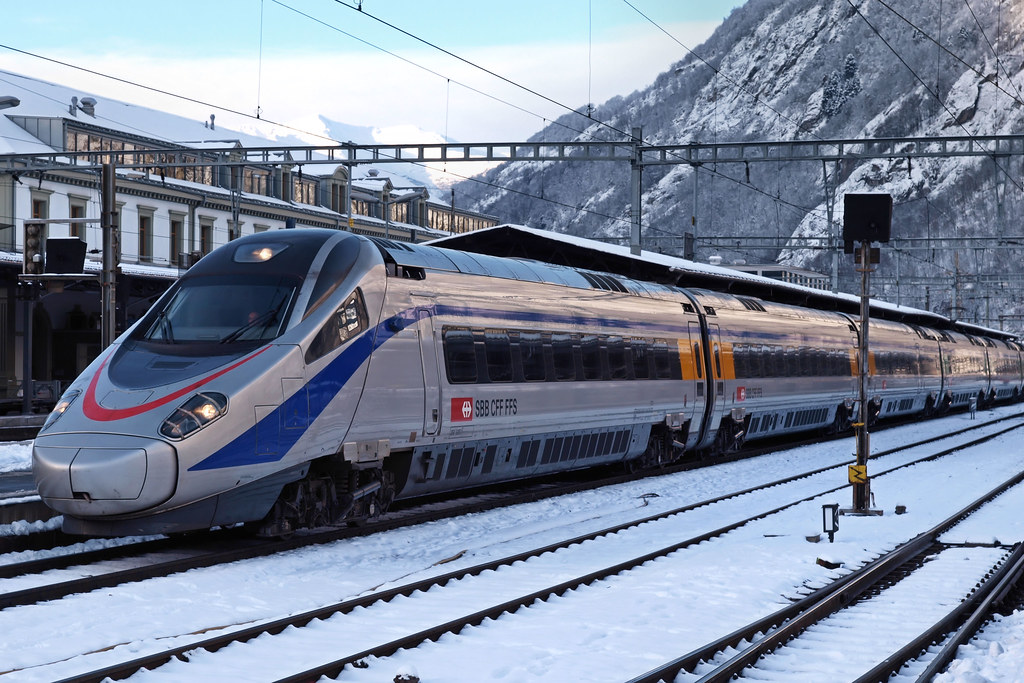



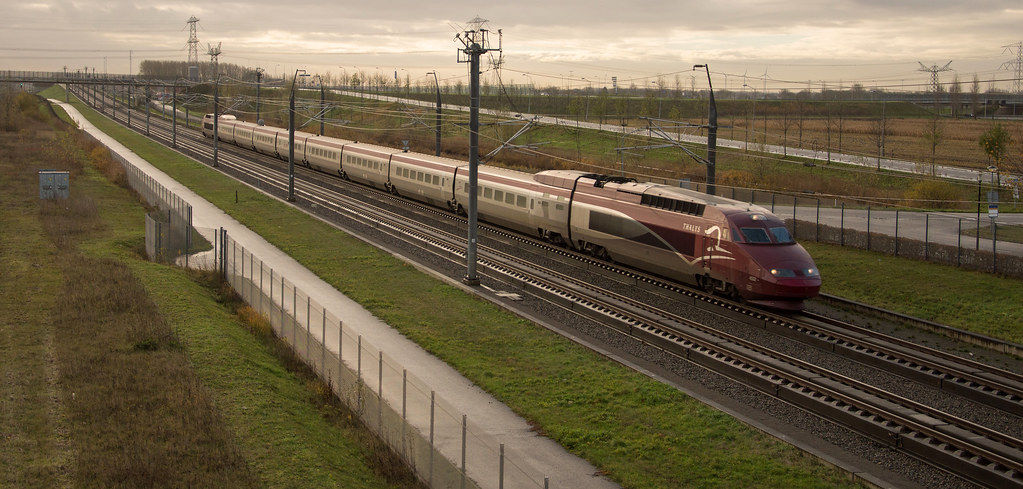
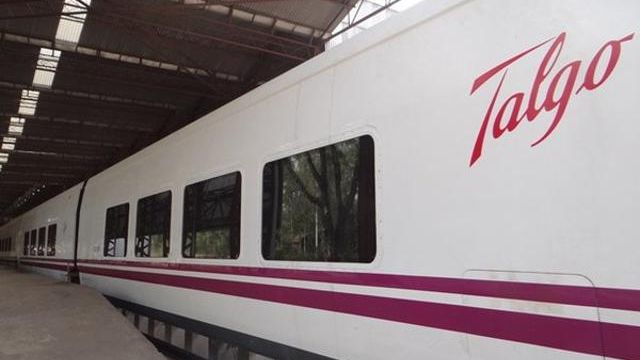
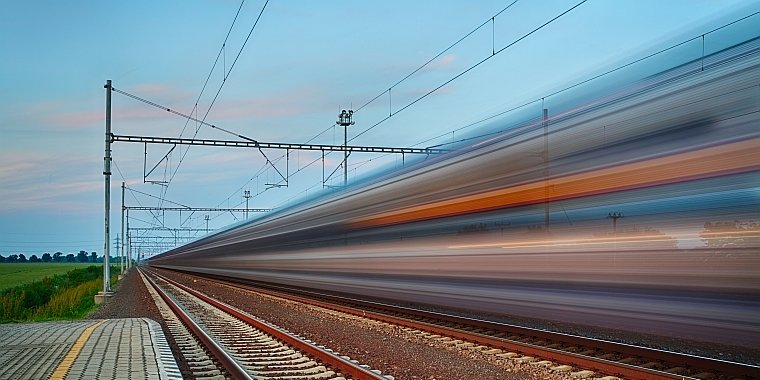
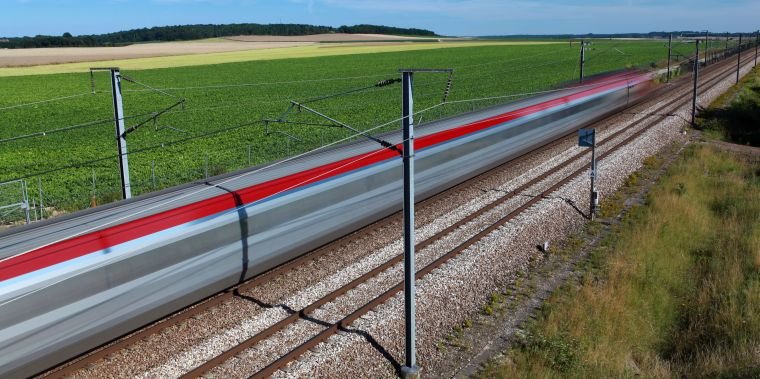

I still can’t understand how laying of tracks will be that expensive
Italy has multiple examples of high-speed rail within its own network. One set includes the Frecciarossa and Italo, much like the TGV and Shinkansen, that costs a fortune, needs dedicated infrastructure and hits very high speeds. That’s very much like our prospective HSR link between Mumbai and Ahmedabad.
They also have the Frecciargento, which runs along conventional tracks at average speeds of 140-150 km/h, which go higher on the dedicated high-speed lines. This is a tilting train, which has a lower top speed, but maintains a decent average. This can be a smart alternative to the overly expensive dedicated HSR operations. Some of them are previous generation trains, but maintain impressive averages, and if we’re not looking at these for our high-speed solutions, we’re missing a trick.
They even have an operation that uses two 3 KV DC locomotives on either side of an unpowered IC rake, known as the Frecciabianca. This train achieves impressive average speeds of 100-125 km/h on existing, shared tracks, over distances as long as 1049-1200 km. While that dedicated HSR infrastructure and rolling stock may be a long time away from being ready, tilting trains can get ready for service a lot sooner if commissioned, and a more immediate and even cheaper solution can be found in push-pull ops.
There are a few errors in this article but I will focus on just one and that is the public/government ownership of the high speed rail systems. It is true that all HSR systems are government-built and owned but there is one major exception: the HSR system in Taiwan and THAT system shows why HSR systems are government built. The Taiwan high speed system was built entirely by private funds. And now the Taiwan system is going to go into bankruptcy and be taken over by the government which will then have to take care of the debts that the private Taiway High Speed Corporation simply could not shoulder. And THAT is why high speed rail systems are built by governments. A private entity is left carrying the HUGE debt of building the VERY costly high speed system whereas a government basically pays for the cost out of the government coffers and “it is paid for” with no debt to shoulder. Even with healthy revenue from the high speed trains, the Taiwan HS Corp simply couldn’t service it’s massive debt it incurred in building the systems and thus its bankruptcy. A government built high speed system would never have to face such a problem.
The other issue is the “private” Japanese high speed companies. The Japanese government built and operated the Shinkansen (high speed trains) up until the late 1980s when they were “spun off” and privatized. The NEW “private” companies “inherited” the debt and operating costs of the Japanese Shinkansen but by then the Japanese govnerment had already covered the huge costs of the actual building of the system. Thus the new “private” Japanese high speed rail companies were NOT left with the huge costs of the actual building of the system. Thus they are viable train operators. The same thing is happening in Italy. For years, the high speed train system was operated strictly by the Italian government. However, due to a lot of political factors, a new private high speed train operator has begun to operate on the Italian government-owned tracks. It will pay a fee to operate on the government owned tracks. Again, this new Italian high speed operator will NOT be shouldering the huge debt costs of the building of the actual rail network itself so the new train operator will be fine unlike the Taiwan private train operator.
I had traveled in Switzerland about 2 years back. Once I traveled from Geneva to Paris the distance of 500 km in 3 hours. Initially, the trains started slowly (by slowly, I mean approx 180 kmph) for 1 hour, then it picked up speed upto 300 kmph, and that too in thick and heavy fog (I was barely able to see the electric poles however, and I noticed it covering 3 electric poles per second). Here in India, fog (of even milder intensity) is one of the reasons for slowing of trains.
Very good article. I happened to travel by the CRH 380 from Beijing to Xian. It covered a distance of 1215 km in 5″45′ with 11 stops. There was just one curve at the start, after which the entire length was dead straight. Never felt for even a second that the train was travelling at 300kmph. The following week, when I travelled from Chennai to Bangalore by the Shatabdi, everyone were shaking like crazy at a speed of just 100kmph.
Somehow, someday I wish that we may live to see the bullet train in India.